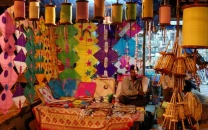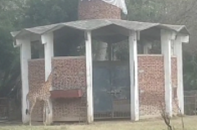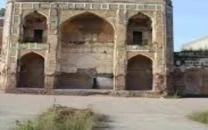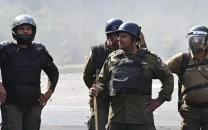Depletion of greenery leaves city sweltering
70 UCs around Lahore used to consist of villages in past

The intensity of summer is gradually increasing across the country, including Lahore, due to rampant urbanisation at the expense of agricultural area, pollution and deforestation.
While the villagers and citizens are facing severe difficulties because of the climate changes, the government appears to be focusing on temporary measures to address the issues rather than long-term planning.
According to official data, the district government of the provincial capital covers an area of 1,770 square kilometres, while the surrounding agricultural area extends to the Wagah and Kasur borders.
More than 70 union councils around Lahore used to consist of villages in the past but the agricultural area adjoining the metropolis is now almost becoming extinct. The crops, vegetables and milk produced in the areas used to provide more commodities for the people of Lahore than their need. Despite a ban imposed by the government, private housing schemes have been set up on agricultural land. As a result, the farmland around Lahore has almost disappeared.
Construction of commercial and apartment buildings has also started in Lahore, while the number of vehicles in city has increased. Meanwhile, the greenery in the city is disappearing due to cutting of trees for the construction of new highways, underpasses and flyovers. As a result, the intensity of heat has started increasing in Lahore. According to the record of the past 20 years, the highest temperature in the provincial capital during June has been recorded at 45 degrees Celsius in five years, including this summer.
Read Schoolchildren at risk of heatstroke
The highest temperature was recorded at 45.4 degrees in 2003, 45.2 degrees in 2005, 45.5 degrees in 2012 and 45.2 degrees in 2017. This year, the temperature reached 45 degrees. Only once in the 20 years the temperature reached 47 degrees, in June 2007. In 2014, the highest temperature was recorded at 46 degrees Celsius. In 2001, a temperature of 41.4 degrees was recorded, while 44 degrees Celsius was recorded in 2002, 42 degrees in 2004, 2012, 2012 and 2015. During three years, 2009, 2018 and 2020, the highest temperature during the months has been recorded at 43 degrees. The highest temperature recorded during June this year so far has risen to 45 degrees from last year’s 43 degrees.
Like other districts of Punjab, Lahore is currently facing an extreme heat wave.
Less people are seen travelling on the city roads due to the intense heat in the afternoon.
The school hours have been reduced due to the harsh weather and an emergency alert has been issued by the departments concerned to cope with the situation.
According to Meteorological Department experts, depletion of agricultural land, deforestation, unplanned urbanisation, lack of water bodies and greenery are increasing the amount of carbon dioxide in the atmosphere, due to which the temperatures are rising.
Environment Protection Department Deputy Director Ali Ijaz said due to urbanisation pollution from different sources including smoke-emitting vehicles heat intensity has substantially increased. The department is working with its existing resources but more work is needed.
Traffic Engineering & Transport Planning Agency (TEPA) Engineer and Transport Planning Specialist Khushal Khan said urbanisation without a master plan has affected all walks of life including road traffic, It has disturbed the environment as well.
Published in The Express Tribune, June 13h, 2021.



















COMMENTS
Comments are moderated and generally will be posted if they are on-topic and not abusive.
For more information, please see our Comments FAQ